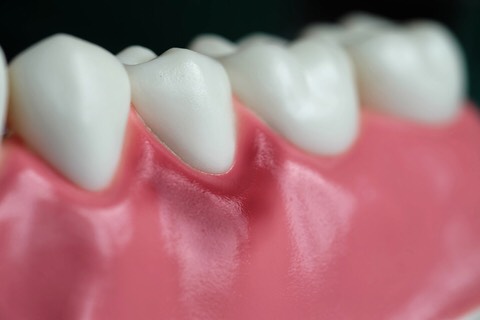
Periodontology is a branch of dentistry that examines the hard and soft tissues around the teeth and dental implants clinically, microscopically and biochemically and aims to prevent, diagnose and treat diseases that affect these tissues. Periodontology branch covers tartar, gingival operations, flap operations, papillary operations, deep curettage and implantology. Even healthy teeth without caries can fall out due to gum disease.
Smile Design:
Smile is one of the most important facial expressions and is known as one of the nonverbal parameters of communication. Since the center of communication on our face is the mouth area, the attractiveness of the face and the smile are closely linked to each other. An attractive smile not only affects the perception of other people, but also affects the psychology and behavior of the individual. The ideal smile is also associated with the perception of health and success.
Dentists who are working on smile design, used to focus on the size, shape and proportions of teeth. As technology and aesthetic expectations of patients develop, the structure and shape of the teeth, as well as their compatibility with the gums, have become important. Today, not only the harmony of teeth and gums, but also their relationship with lips, cheeks and facial features have become important in ideal smile design.
Gummy Smile
A Gummy smile means that the gums appear when smiling. The shape, position and color of the gums and teeth determine the harmony of a smile. However, it is also known that the amount of gum appearance affects the attractiveness of the smile. That is why the aesthetics of the gums is as important as the aesthetics of the teeth. The appearance of our gums as well as our upper teeth while smiling can be extremely uncomfortable for some of us. The attractiveness of a smile is related to both aesthetics and perception. When some of us smile, a lot of gum tissue can be seen.
Ideal smile:
Defining a smile as attractive or pleasant is actually a matter of perception and therefore varies from person to person. However, according to the studies and average values, it is concluded that a smile should appear pleasant in general when the gums appear at most 2 mm while smiling.
Causes of a gummy smile include teeth that have not fully erupted or are too short in length, overactive upper lip muscles, or combinations of these. The clinical diagnosis of a gummy smile can be made after clinical examination of the visible tooth lengths, gum width, lip muscles, upper teeth being on the front of the lower teeth, and the vertical borders of the smile.
If the appearance of the gums while smiling negatively affects the life, comfort and pleasure of laughing, it may be necessary to do something about it.
Gum smile treatment:
The appearance of gums caused by excessive gum tissue covering the teeth can be corrected by a process called surgical crown lengthening. The gum tissue around the tooth is surgically removed. This process can also be done using a laser. When the excess gum covering the tooth is removed, the entire tooth will be visible and an aesthetic appearance will be achieved. This procedure is actually performed to remove excess gum tissue and show the exact length of the teeth located at the bottom. If the operation applied only to the gums is not enough, the bone supporting the gum is reshaped. The shortness of the upper lip or its excessive movement while smiling also causes the gums to appear. After your evaluation with a periodontist, if your problem is that your lips are lifting too much when smiling, it is possible to remove the gum smile by applying botox to the upper lip.
Gingival enlargement
Gum enlargement is the swelling of the gums more than normal as the gum moves towards the surface of the tooth and swells to the sides. It is also known as gum swelling. There are many reasons.
The most important reasons of gum enlargement due to chronically inflamed gums are poor oral hygiene, poorly made dental fillings, poorly made veneers, mouth breathing, nasal passages, gingival enlargement due to orthodontic treatment, abnormal pressures of the hook parts of the prosthesis on the gums, abnormal pressures on the gums in fixed bridges.
Gum enlargement due to medication used:
Another reason for gum enlargement is the medication used. Medications used in some epilepsy and blood pressure diseases and drugs that suppress the immune system can cause enlargement of the gums. If the patient taking the medication does not pay attention to oral hygiene, redness, pain and bleeding are observed in the mouth. Especially in the upper and lower anterior teeth regions, drug-induced gum enlargement is common. In drug-induced gum enlargement, the drug is either discontinued or changed. A detailed gum treatment is required in patients with drug-induced gum enlargement.
Pregnancy-related gum enlargement:
The enlargement of the gums during pregnancy is caused by the change in the level of hormones in the body. If the patient has previously experienced inflammation on the edges of the gums, gum enlargement may be encountered during pregnancy. So, just pregnancy is not a factor that causes gum enlargement. In order to prevent the disease from occurring, a gum specialist should examine the patient before pregnancy.
Treatment of gingival enlargement:
In order to prevent the condition caused by gum enlargement, a periodontology specialist should examine the patient without delay and the main cause of the disease should be determined. During the treatment process, the patient should pay attention to oral and dental health care, and gain the habit of brushing and flossing regularly. Enlargements that do not improve with gum treatment can be corrected with laser.
